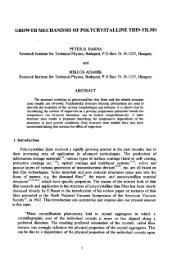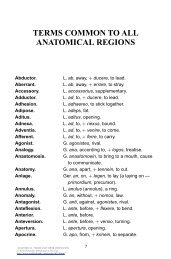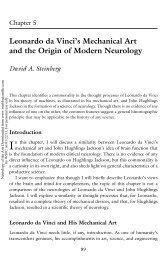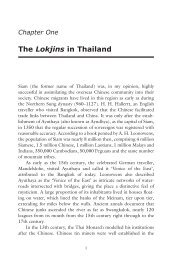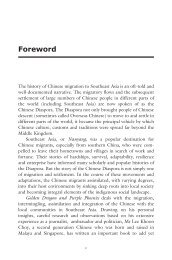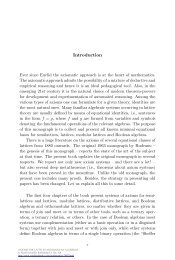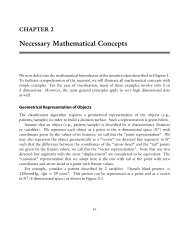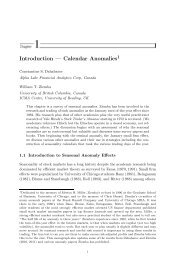Metagenome Analysis Using Megan - Asian Scientist Magazine
Metagenome Analysis Using Megan - Asian Scientist Magazine
Metagenome Analysis Using Megan - Asian Scientist Magazine
Create successful ePaper yourself
Turn your PDF publications into a flip-book with our unique Google optimized e-Paper software.
~ Not12nr database from which all sequences representing Bdellovibrio bacteriovorus HDIOO havebeen removed. This mimics the case in which reads are obtained from a genome that is notrepresented in the database. Of the 2000 reads, approximately 65% (1361) have no hits andapproximately 15% (272) are not assigned. A small number of false positives occur up tothe level of bacteria.cellular organisms 1460 Deltaproteobacteria 1079Proteobacteria 1143 BdellovibrioBdellovibrio bacteriovorus HDlOO 1062r Bacteria 1341(a) root 14980 C]Not assiyned 105(b)Bacteria 227 Deltaproteobacteria 10I1 _.OGammaproteobacteria 9r-.-,---OAnaeromyxobacter dehalogenans 3OBdellovibrio bacteriovorur 7oMagnetococcus 4I,,(ytospira interrogans 2assigned 272.- j j N c hits 1361Figure 5. MEGAN analysis of 2000 reads collected from Bdellovibrio bacteriovorus HDlOO using Roche GS20sequencing technology. (a) <strong>Analysis</strong> based on a BlastX comparison with NCBI-nr. (b) Similar analysis, but withall hits to database sequences representing Bdellovibrio bacteriovorus HDlOO removed, mimicking the situationin which the reads originate from a genome that is not represented in NCBI-nr.These two experiments show that the LCA-assignment algorithm is quite conservative,avoiding false positive assignments at the price of producing quite large numbers of inspecificassignments. Further, they also indicate that the performance of this type of approachdepends heavily on the set of sequences represented in the reference database. In particular,if close relatives are missing in the database, then reads from an unknown organism willgive rise to many unassigned reads and possibly some false positive assignments, as well.2.3. <strong>Analysis</strong> of the Sargasso Sea data setIn the Sargasso sea project13, samples of sea water were collected and organisms of size0.1 - 3.0 pm were extracted to produce a metagenome dataset. In 4 separate experiments,approximately 1.9 million reads of average length 818 bp were collected using Sangersequencing.To explore the application of MEGAN to such data, we downloaded the first 10,000reads from https ://research. venterinstitute. org/sargasso/ and ranBlastX to compare the data against the NCBI-NR database. Only 1% (13) of the readshad no hits. A MEGAN analysis of the data using a bit score threshold of 100 and discardingall isolated assignments, assigned approximately 90% (8,977) to taxa, a majorityof which (6811) were assigned to bacteria. The results are summarized in Figure 6. Interestingly,this analysis of a small portion of the Sargasso sea dataset is compatible withthe analysis reported by Venter et ~ l.'~, (although Firmicutes are missing, probably due to



